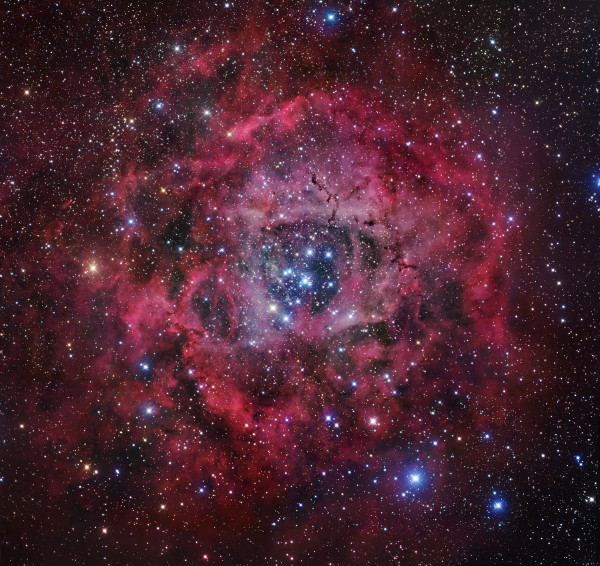“Language… has created the word ‘loneliness’ to express the pain of being alone. And it has created the word ‘solitude’ to express the glory of being alone.” -Paul Tillich
One of the biggest questions in all of science is that of just how ubiquitous -- or rare -- life in the Universe is. With the sole exception of Earth, all the worlds in our Solar System seem devoid of life. Or at least, their detection has eluded us so far. But what of all the other planets, star systems and galaxies in the Universe?
 Image credit: Robert Gendler of http://www.robgendlerastropics.com/Biography.html.
Image credit: Robert Gendler of http://www.robgendlerastropics.com/Biography.html.
We all share the same common, cosmic history, and as far as we can tell, the ingredients for life are everywhere. But for the first time in human history, we may not need life to come and contact us; we can simply stay here and look for surefire signatures from afar.
 Image credit: NASA / JPL-Caltech, via http://www.nasa.gov/centers/goddard/news/topstory/2007/cloudy_world.html.
Image credit: NASA / JPL-Caltech, via http://www.nasa.gov/centers/goddard/news/topstory/2007/cloudy_world.html.

The Astrophysical Journal Letters [Volume 785, Number 2, Apr 2014] "Abiotic Oxygen-dominated Atmospheres on Terrestrial Habitable Zone Planets" by Robin Wordsworth and Raymond Pierrehumbert
"...One of the most widely accepted biosignatures for an Earth-like planet is an atmosphere where oxygen is a major constituent. Here we show that lifeless habitable zone terrestrial planets around any star type may develop oxygen-dominated atmospheres as a result of water photolysis, because the cold trap mechanism that protects H2O on Earth is ineffective when the atmospheric inventory of non-condensing gases (e.g., N2, Ar) is low. Hence the spectral features of O2 and O3 alone cannot be regarded as robust signs of extraterrestrial life"
If this is true, what second observation would strengthen the case for biotic oxygen production on the target planet?
Would we also expect to see a signature for water molecules too?
Organic chemistry molecules?
If we pointed James Webb at Earth from a few light years away what would we see indicative of life?
Our atmospheric construction is highly out of equilibrium and therefore it's an ascending level of confidence of biotic (or at least replicating sustaining anti-trophic systems such as living ones) to see a concentration of O2 in increasing percentages.
However, such equilibrium necessarily takes a long time to reach at "goldilocks" or colder locations, so the age of the system is required too.
The paper is looking at, for example, the early earth where O2 was being combined with the hundred-fold more abundant H2 to for H2O which doesn't escape an earth, rises to be disassociated into H2 and O2 again, where the H2 leaves and the O2 then "sees" a ninety-nine times abundant H2 and combines to form H2O again.
This process does take a lot of time. At least on human scales.
This Star KIC 8462852 seems to have some activity around it that may not be naturally occurring and in January they will listen for radio waves.
http://www.mnn.com/earth-matters/space/stories/alien-technology-possibl…